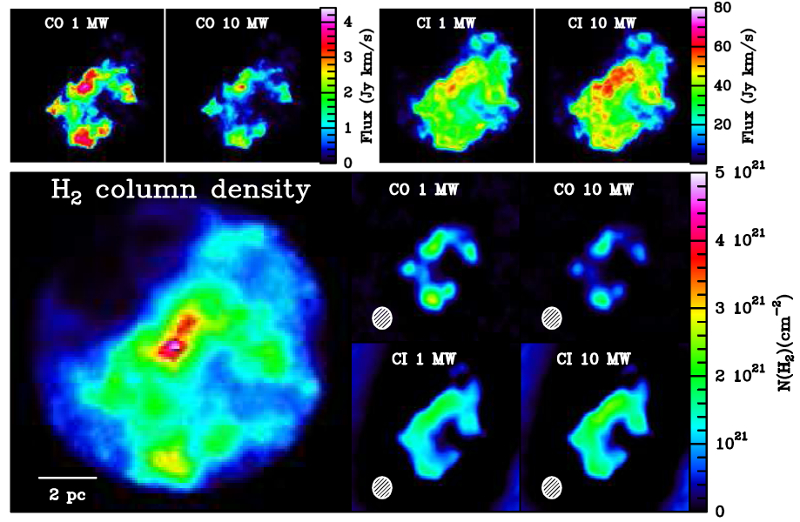| EPoS Contribution |
|
Tracing H2 in cosmic-ray dominated regions
Thomas Bisbas MPE, Garching, DE | |
| Molecular hydrogen (H2) plays the dominant role in the star-formation process of all galaxies, as ~ 70% of the total baryonic non-stellar mass of the Universe consists of this species. However, owing to its quantum mechanical properties, H2 is not readily observable by radiotelescopes and because of this, the CO molecule is widely used as a tracer. During the last 5 years, however, there is growing evidence that this tracer may not always be accurate or even applicable to extragalactic studies. The recently published effect of CO-destruction due to cosmic rays appears to have the potential of leaving vast amounts of H2-rich ISM undetectable using the standard CO-to-H2 method; instead, atomic carbon (CI) is used as an alternative H2 tracer. We will present 3D astrochemical simulations and artificial observations showing how cosmic rays affect the ISM chemistry at high optical depths and based on these findings we will suggest which are the most appropriate conversion factors to calculate the corresponding H2 column density. | |
 | |
| Caption: Synthetic ALMA observations of CO(1-0) and [CI](1-0) lines emitted from a typical Milky Way (MW) fractal giant molecular cloud (GMC). The GMC is embedded in an isotropical radiation field with intensity equal to the local average. Two different cases of CR intensities are examined: 1 and 10 times the average MW (1 MW, 10 MW respectively). The top row shows CO(1-0) (left pair) and [CI](1-0) (right pair) in 1 MW (left cases) and in 10 MW (right cases). These are the true fluxes in (Jy km/s). It can be seen that the CO(1-0) intensity becomes fainter with increasing CRs whereas the reverse situation is observed in the [CI](1-0) line intensity. The bottom four panels show the obtained N(H2) by using the Xco- and Xci- factors found in literature. Under MW conditions both methods return similar N(H2) estimates, however under higher CRs the standard CO-to-H2 method does not reproduce the H2 column density accurately. | |
| Collaborators: P. Papadopoulos, Cardiff U, GB S. Viti, UCL, GB L. Szucs, MPE, DE Z. Zhang, ESO, DE |
Key publication
Suggested Session: Chemistry |

